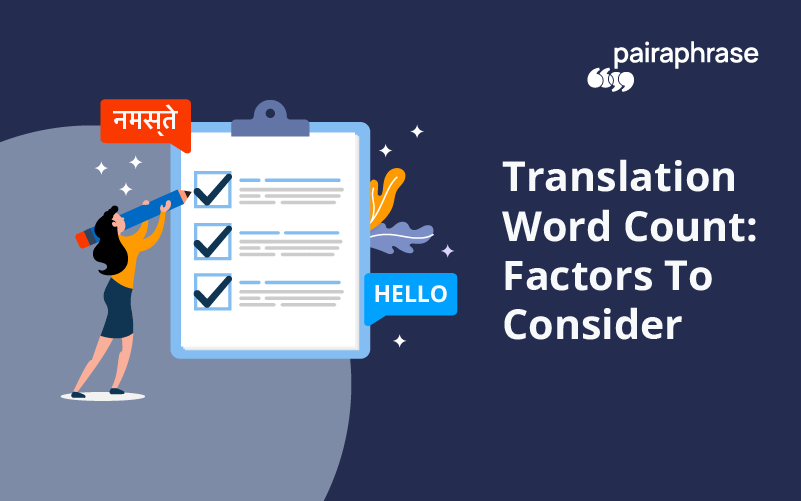Translation word count is an important factor when it comes to managing translations on behalf of your organization or client.
If you’ve ever purchased translation services or translation software, then you’ve likely been quoted a price by word. Cost Per Word is the standard used in most countries tocalculate translation cost, including the United States.
However, there are exceptions. Some countries use Cost Per Character instead. In Germany’s case, they use Cost Per Line, and a line is usually defined as 55 characters long. Word count can also affect how much you pay for translation software, as many plans are priced by the number of words translated.
Just as importantly, it's a great tool to help determine the amount of time it takes to produce a translation.
What Causes Translation Word Count Discrepancies?
When you go to count your words wherever you are translating, it can be confusing when you receive different results depending on the platform you’re using or the file itself. Whether you’re counting words of a file in its native word processing application (say Microsoft Word) or within your translation management software, you might see a discrepancy in word counts.
Document Formats
Certain document formats are resistant to word count. For example, PDF’s that are locked or scanned PDF files. In those cases, you might need to find the unlocked file or plan to manually count words.
Text Elements
To the frustration of many translation managers, footnotes, endnotes, tables and text objects are notoriously excluded from word count in some versions of Microsoft Word. Embedded jpegs are usually not counted and text in the form of WordArt, and text that exists in shapes and embedded tables can also be excluded.
Numbers & Symbols
Numbers written with digits such as “123” are sometimes excluded from word count. Written in the form “one hundred twenty-three,” the number will count as words. Symbols are oftentimes counted as spaces. So “twenty-three” might be counted as two words instead of one, depending on the tool you’re using.
All of these factor into why you may get different word counts from different applications for the same file.
Language
Word count can also differ greatly between languages. So it’s imperative to understand this going into a translation project or software subscription. For example, a sentence in a romance language can be 30% longer than it is in English.
Algorithm
Word count approach for translation management systems and word processors can vary depending on the application. Ultimately, every translation application uses its own algorithm to count words and that's why you'll get a discrepancy in word count.
How to Simplify Word Count in Your Day-to-Day
The only way to truly get the feel for how word count works in a particular system is to be aware that software applications all count words differently and make sure all your users are in alignment. Translation software provides more word count data by breaking files down into 100% matches, partial or fuzzy matches, repetitions and new words. It's the preferred method for producing word counts and planning translation projects.
In other words, translation software outperforms word processor software. This will both simplify your translation process and help you save time and continuously reduce costs in the long run.
Ready to Save Time & Money on Translation?
of Pairaphrase.


.png)

.png)



